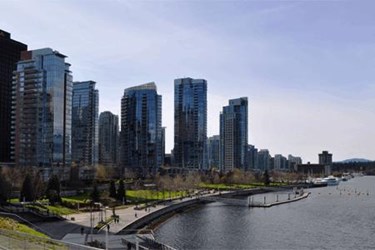Great Cities… Work With Nature

By James A. Moore, Principal at Jacobs
(A recent post — "Great Cities: 10 Themes" — summarized a range of urban planning ideas and approaches emerging in cities around the world; this piece takes a more substantive look at the first theme.)
Every city is located in a unique physical setting, with specific environmental, climatic, and geographic characteristics. Historically, when resources and technologies were limited, people adapted settlements to their surroundings, took advantage of local benefits wherever possible, used design and accessible materials to mitigate undesirable conditions, and recognized intrinsic limitations. This gave rise to the many regional variations among historic settlements, including distinct overall plans, urban forms, building materials, and architectural character.
Over time, long-standing concerns relating to accessible shelter, resilient food supplies, effective sanitary systems, viable mobility, and the like were overcome. Infrastructure systems advanced and improved; substantive works of engineering became commonplace, and the ability to exceed the inherent carrying capacity of a location was seen as the norm. The natural milieu of mankind became a man-made, built environment.
For much of the past 200 years, economic, political and, increasingly, technological factors have trended towards the homogenization of building designs, urban plans, and city forms throughout the world, regardless of how climatically or contextually appropriate they might be. The ability to readily overcome the natural limiting conditions of a setting comes at a price, however, particularly in terms of energy and resource consumption, and associated environmental pollution. And, as recent events such as hurricanes, cyclones, tornadoes, earthquakes, fires, and floods repeatedly remind us, even the best technologies are often no match for “mother nature”.
Examples of “man versus nature” shifting towards “man and nature” are starting to emerge worldwide. Late 20th century theories on regenerative design, circular economies, natural capitalism, and biomimicry all speak to the goals of optimizing natural resources or services, minimizing waste, using nature as a model, and treating human settlements as integrated physical and natural systems. To date, these approaches have been applied at the scale of buildings or complexes. Examples such as the VanDusen Botanical Garden Visitors Center in Vancouver, British Columbia, the Bullitt Center in Seattle, Washington, and Hammarby Sjostad in Stockholm, Sweden all point to the potential to create human environments that strive to operate in keeping with natural systems. Green Vancouver is one of a number of attempts to apply this approach at a larger scale.
At the same time, the emerging concept of resilience has forced a reassessment of the relation between the built and natural environments, under the leadership and guidance of entities such as the Rockefeller Foundation’s 100 Resilient Cities, which specifically looks to assist cities, worldwide, is taking on what can seem like an all-encompassing challenge. (Jacobs was recently selected as a Platform Partner for the 100 Resilient Cities initiative.)
In recent years, many cities have come to re-recognize the valuable role that mangroves, coastal plants, and other native flora play in protecting shorelines from storm surges. In the aftermath of Hurricane Sandy, one proposal developed as part of New York City’s resiliency planning is to green the tip of lower Manhattan with a necklace of parks and planted zones designed to serve as civic spaces during good weather and as storm barriers during bad weather. In a similar manner, the proposed Simmons Park in Dallas will be designed to absorb Trinity River floods during certain parts of the year, and to be an accessible public resource during the remaining times. This is very much in keeping with the historic approach to rivers and water bodies, and is being studied and emulated in cities around the world.
Cities are also working to tap into available ecosystem services, for both operational and financial reasons. After considering a range of “hard” solutions, Atlanta, Georgia took a “soft” approach to flood control in the design and construction of Historic 4th Ward Park in what was one of the least-served neighborhoods in the city. This park/stormwater system has become a key element within the regional Beltline project, and the focus for substantial reinvestment and redevelopment, serving as a community gathering spot, workout venue, and oasis, while still operating as an essential piece of water infrastructure.

The cost of replacing and updating Philadelphia’s century-old combined sewer overflow (CSO) system was substantially higher than the City could afford. At the same time, the city could not ignore the negative impacts (and Federal mandates) of continued flooding. Recognizing that significant amounts of water could be absorbed by permeable soils, the City’s Green City Clean Waters program set out to create a network of “green” alleys, replacing the paving in the hundreds of miles of alleys with turf, permeable pavers, and other forms of “low impact” development.
Approaches such as these extend beyond a mere concern for environmental sustainability or the need for fiscal probity. Instead they point towards a deeper understanding of cities as complex “systems of systems” integrally embedded within specific natural settings. The goal is a symbiosis of the built and the natural environments, a merging and blending of state of the art “high-tech” solutions with time-honored, low-tech approaches.
Symbolically and operationally, this approach is articulated through projects such as Central Park Sydney in New South Wales, or the ParkRoyal and Oasia Hotels in Singapore, that treat a state-of-the-art building as a framework for supporting a wide range of plants, blending the idea of the built and the natural, and highlighting key notions of environmental stewardship, access to nature, and the benefits of available ecosystem services.
The goals and the opportunities are to continue to explore and expand these ideas and approaches, and move their application from the building or the complex to the scale of the neighborhood, the district, and the city, optimizing “found” services, appropriately blending local, regional, national, and international resources, and thinking of the human habitat in biological rather than mechanical terms.
